#Queen Adelaide
Explore tagged Tumblr posts
Text

Queen Adelaide (Princess Adelaide of Saxe-Meiningen)
Artist: William Beechey (English, 1753–1839)
Date: c. 1831
Medium: Oil on canvas
Collection: National Portrait Gallery, London, United Kingdom
Adelaide of Saxe-Meiningen
Adelaide of Saxe-Meiningen (Adelaide Amelia Louise Theresa Caroline; 13 August 1792 – 2 December 1849) was Queen of the United Kingdom of Great Britain and Ireland and Queen of Hanover from 26 June 1830 to 20 June 1837 as the wife of King William IV. Adelaide was the daughter of George I, Duke of Saxe-Meiningen, and Luise Eleonore of Hohenlohe-Langenburg. Adelaide, the capital city of South Australia, is named after her.
#portrait#queen adelaide#adelaide of saxe meiningen#british queen#british monarchy#painting#oil on canvas#standing#three quarter length#costume#flowers#lace#hat#head attire#earrings#hair ornament#pearls#crochet#william beechey#english painter#british culture#fine art#19th century painting#european art#artwork#british royalty
13 notes
·
View notes
Text
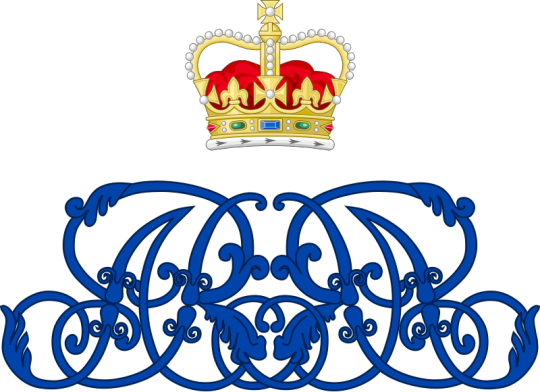
♕ ♕ Royal Family Cyphers ♕ ♕
Queen Adelaide of the United Kingdom
8 notes
·
View notes
Text
Alexandra: Imagine if someone handed you a box full of all the things you lost throughout your life.
Charles John: It would be nice to have my sense of purpose back…
Carlota: Oh wow, my childhood innocence! Thank you for finding this.
William: My will to live! I haven't seen this in years.
Adelaide: I knew I lost that potential somewhere.
Maximillian: Mental stability, my old friend!
Alexandra: Jesus, could you guys lighten up a little?
#history memes#incorrect quotes#queen alexandra#jean baptiste jules bernadotte#karl xiv johan#karl johan julius bernadotte#charles xiv john#charles john julius bernadotte#empress charlotte of belgium and mexico#empress carlota of belgium and mexico#william iv#william henry von hanover#queen adelaide#adelaide amelia louise theresa caroline von saxe-meiningen#emperor maximillian i of mexico#marie charlotte amelie augustine victoire clementine leopoldine von saxe coburg gotha#maria carlota amelia augusta victoria clementina leopoldina von saxe coburg gotha#ferdinand maximillian josef maria von habsburg-lorraine#alexandra caroline marie charlotte louise julia glücksburg#sorry for the long tags
4 notes
·
View notes
Note
Please do gif sets of costumes worn by princess Victoria and princess Adelaide in queen Charlotte a bridgerton story
Sure.
#Queen Charlotte A Bridgerton Story#Queen Adelaide#Adelaide of Saxe-Meiningen#Victoria of Saxe-Coburg-Saalfeld#Victoria Duchess of Kent and Starthearn#requests
3 notes
·
View notes
Text
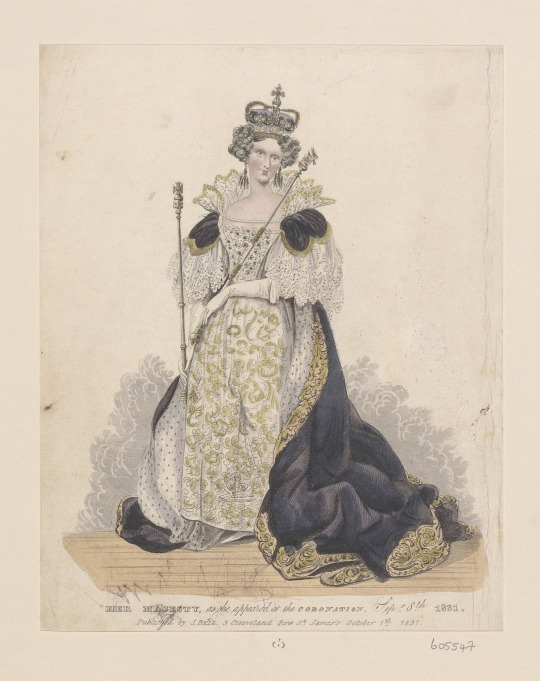
Etching, 1831, British.
Portraying Queen Adelaide in her Coronation Robes.
Royal Collection Trust.
#drawing#etching#1831#1830s#queen adelaide#royal collection trust#royal#coronation#British#Britain#1830s Britain
4 notes
·
View notes
Text
A Brief History of British Coronations 1902-1937
On 6 May King Charles III will be crowned at Westminster Abbey in a ceremony that has its origins dating back a thousand years to King Edgar the Peaceful. It will also be the first coronation in nearly 70 years and much like his mother Queen Elizabeth II’s coronation which was the first to be televised, Charles III’s coronation will be the first to utilise both social media and YouTube as well as…

View On WordPress
#"I Was Glad"#20th century British History#A.B. Benson#Anna Keay#British Royal Family#Consuelo Duchess of Marlborough#coronation#Coronation Ode#Frederick Temple#Janet Ridley#King Charles III#King Edward VII#King William IV#Mary Lady Curzon#Queen Adelaide#Queen Alexandra#Queen Camilla#Queen Elizabeth II#Sir Arthur Sullivan#Sir Edward Elgar#Sir Hubert Parry#Suzy Menkes#William Maclagan
2 notes
·
View notes
Text


ADELAIDE KANE as MARY STUART ↴ Reign | For King and Country ( 1x09 )
#reignedit#reign#perioddramaedit#akaneedit#mary queen of scots#adelaide kane#mary stuart#periodedit#gifs#s1#tvedit#by pariss
344 notes
·
View notes
Text
A central element of the myth of [Eleanor of Aquitaine] is that of her exceptionalism. Historians and Eleanor biographers have tended to take literally Richard of Devizes’s conventional panegyric of her as ‘an incomparable woman’ [and] a woman out of her time. […] Amazement at Eleanor’s power and independence is born from a presentism that assumes generally that the Middle Ages were a backward age, and specifically that medieval women were all downtrodden and marginalized. Eleanor’s career can, from such a perspective, only be explained by assuming that she was an exception who rose by sheer force of personality above the restrictions placed upon twelfth-century women.
— Michael R. Evans, Inventing Eleanor: The Medieval and Post-Medieval Image of Eleanor of Aquitaine
"...The idea of Eleanor’s exceptionalism rests on an assumption that women of her age were powerless. On the contrary, in Western Europe before the twelfth century there were ‘no really effective barriers to the capacity of women to exercise power; they appear as military leaders, judges, castellans, controllers of property’. […] In an important article published in 1992, Jane Martindale sought to locate Eleanor in context, stripping away much of the conjecture that had grown up around her, and returning to primary sources, including her charters. Martindale also demonstrated how Eleanor was not out of the ordinary for a twelfth-century queen either in the extent of her power or in the criticisms levelled against her.
If we look at Eleanor’s predecessors as Anglo-Norman queens of England, we find many examples of women wielding political power. Matilda of Flanders (wife of William the Conqueror) acted as regent in Normandy during his frequent absences in England following the Conquest, and [the first wife of Henry I, Matilda of Scotland, played some role in governing England during her husband's absences], while during the civil war of Stephen’s reign Matilda of Boulogne led the fight for a time on behalf of her royal husband, who had been captured by the forces of the empress. And if we wish to seek a rebel woman, we need look no further than Juliana, illegitimate daughter of Henry I, who attempted to assassinate him with a crossbow, or Adèle of Champagne, the third wife of Louis VII, who ‘[a]t the moment when Henry II held Eleanor of Aquitaine in jail for her revolt … led a revolt with her brothers against her son, Philip II'.
Eleanor is, therefore, less the exception than the rule – albeit an extreme example of that rule. This can be illustrated by comparing her with a twelfth century woman who has attracted less literary and historical attention. Adela of Blois died in 1137, the year of Eleanor’s marriage to Louis VII. […] The chronicle and charter evidence reveals Adela to have ‘legitimately exercised the powers of comital lordship’ in the domains of Blois-Champagne, both in consort with her husband and alone during his absence on crusade and after his death. […] There was, however, nothing atypical about the nature of Adela’s power. In the words of her biographer Kimberley LoPrete, ‘while the extent of Adela’s powers and the political impact of her actions were exceptional for a woman of her day (and indeed for most men), the sources of her powers and the activities she engaged in were not fundamentally different from those of other women of lordly rank’. These words could equally apply to Eleanor; the extent of her power, as heiress to the richest lordship in France, wife of two kings and mother of two or three more, was remarkable, but the nature of her power was not exceptional. Other noble or royal women governed, arranged marriages and alliances, and were patrons of the church. Eleanor represents one end of a continuum, not an isolated outlier."
#It had to be said!#eleanor of aquitaine#historicwomendaily#angevins#my post#12th century#gender tag#adela of blois#I think Eleanor's prominent role as dowager queen during her sons' reigns may have contributed to her image of exceptionalism#Especially since she ended up overshadowing both her sons' wives (Berengaria of Navarre and Isabella of Angouleme)#But once again if we examine Eleanor in the context of her predecessors and contemporaries there was nothing exceptional about her role#Anglo-Saxon consorts before the Norman Conquest (Eadgifu; Aelfthryth; Emma of Normandy) were very prominent during their sons' reigns#Post-Norman queens were initially never kings' mothers because of the circumstances (Matilda of Flanders; Edith-Matilda; and#Matilda of Boulogne all predeceased their husbands; Adeliza of Louvain never had any royal children)#But Eleanor's mother-in-law Empress Matilda was very powerful and acted as regent of Normandy during Henry I's reign#Which was a particularly important precedent because Matilda's son - like Eleanor's sons after him - was an *adult* when he became King.#and in France Louis VII's mother Adelaide of Maurienne was certainly very powerful and prominent during Eleanor's own queenship#Eleanor's daughter Joan's mother-in-law Margaret of Navarre had also been a very powerful regent of Sicily#(etc etc)#So yeah - in itself I don't think Eleanor's central role during her own sons' reigns is particularly surprising or 'exceptional'#Its impact may have been but her role in itself was more or less the norm
397 notes
·
View notes
Text



adelaide kane as mary queen of scots REIGN (2013-2017)
#perioddramaedit#periodedit#reignedit#akaneedit#mqos#mqosedit#mary stuart#mary queen of scots#reign#adelaide kane#*mine
231 notes
·
View notes
Text



Adelaide Kane as Mary, Queen of Scots
Reign 1.22
208 notes
·
View notes
Text
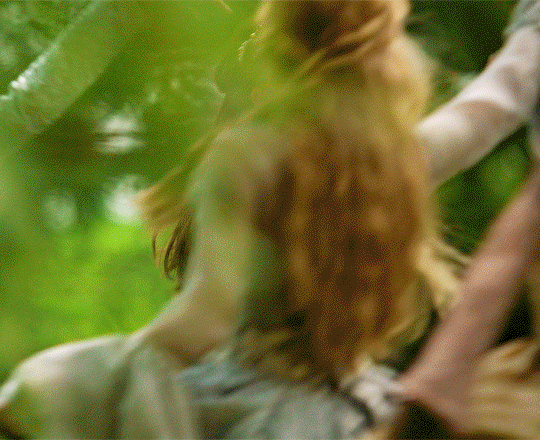


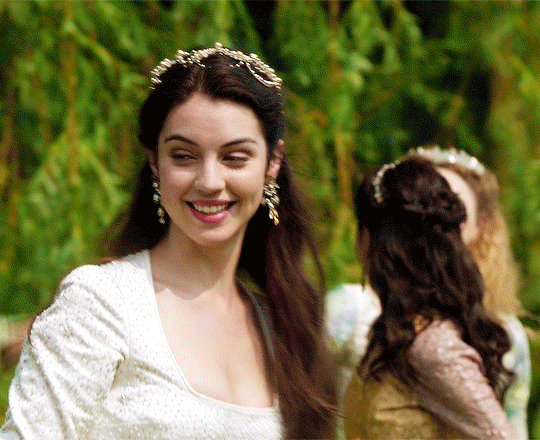
ADELAIDE KANE as MARY STUART ↴ Three Queens, Two Tigers ( 3.01 )
#reign#reignedit#perioddramaedit#marystuartedit#mary stuart#adelaide kane#akaneedit#adelaidekaneedit#mary queen of scots#tvedit#*m
777 notes
·
View notes
Text

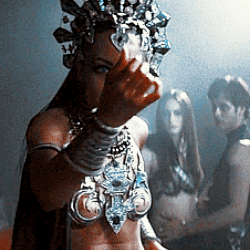







Horror Movie Ladies
#and women who shaped me#if im being honest#🫶🏽🫶🏽🫶🏽#carrie white#carrie 1976#akasha#queen of the damned#angela baker#sleepaway camp#miranda grey#gothika#esther#orphan 2009#adelaide wilson#us 2019#ellie evil dead rise#evil dead rise#jennifer check#jennifer’s body#ginger fitzgerald#ginger snaps#this is for the anon who didn’t exactly request this but asked me who my favorite horror ladies were 🫶🏽#sorry i responded so late 😭
781 notes
·
View notes
Text



#reign#my lady jane#adelaide kane#toby regbo#edward bluemel#emily bader#mary stuart#mary stewart#mary queen of scots#francis ii#guildford dudley#jane grey#lady jane grey#they are the same vibe of show in my head
146 notes
·
View notes
Text
Queen Adelaide’s Fringe Necklace

In 1831, King William IV, uncle of Queen Victoria, commissioned Rundell and Bridge to make a necklace for his wife, Queen Adelaide.
At 46cm in length, the necklace was made up of of 133 sections, consisting a total of 1,456 stones, which had been taken out of redundant pieces of jewellery owned by King George III and Queen Charlotte.
Upon the death of her husband, Adelaide gave the necklace to the new monarch, Queen Victoria.
On 15th November 1837, Victoria wore the necklace, which she had created into a tiara, to one of her first visits to the theatre as Queen.

In the 1858 inventory of jewels, the necklace was recorded to be considered a heirloom of the Crown.

Elizabeth, the Queen Mother had the fringe remade into a necklace, adding a "concealed snap". Although her husband died in 1952, Elizabeth was allowed to keep the necklaces along with other pieces of jewellery. However, after her death in 2002, they were returned to the crown.
Unfortunately Queen Elizabeth Il never wore the necklace publicly.
#british royal family#thejewelcatalogue#jewel;necklace#Queen Adelaide’s Fringe Necklace#queen victoria#the queen mother
69 notes
·
View notes
Text

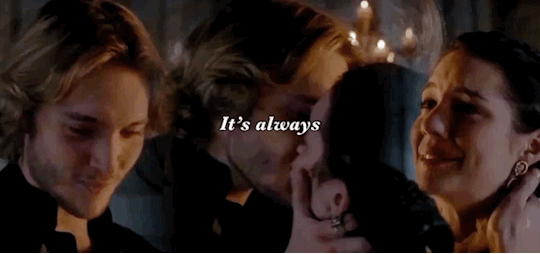

“You and I… us. We’re not just royalty. We are more than an alliance. We’re different. We love each other. And we always will.”-Mary/Francis
Reign (2013-2017)
#reign#reignedit#frary#fraryedit#mary stuart#mary queen of scots#francis valois#dailyreigngifs#perioddramaedit#perioddramasource#perioddramagif#perioddramasonly#period drama#period dramas#weloveperioddrama#adelaide kane#toby regbo
193 notes
·
View notes
Text


“Love is irrelevant to people like us, a privilege we do not share. You told me that. I remember it all. Every word, every moment, for the rest of my life, I love you. But I won’t let other people die for me.”-Mary Stuart
Reign (2013-2017) Season 1 Episode 8: Fated
#reign#reignedit#mary stuart#francis valois#frary#fraryedit#mary x francis#francis x mary#marystuartedit#dailyreigngifs#periodedit#perioddramagifs#period dramas#weloveperioddrama#perioddramaedit#perioddramasource#mary queen of scots#adelaide kane
198 notes
·
View notes